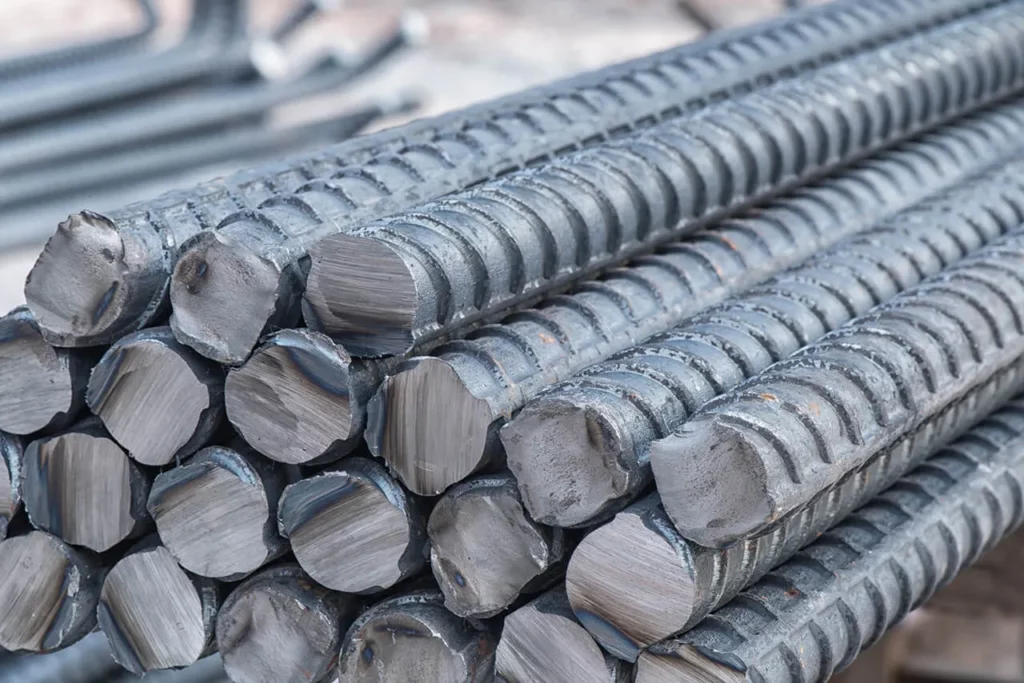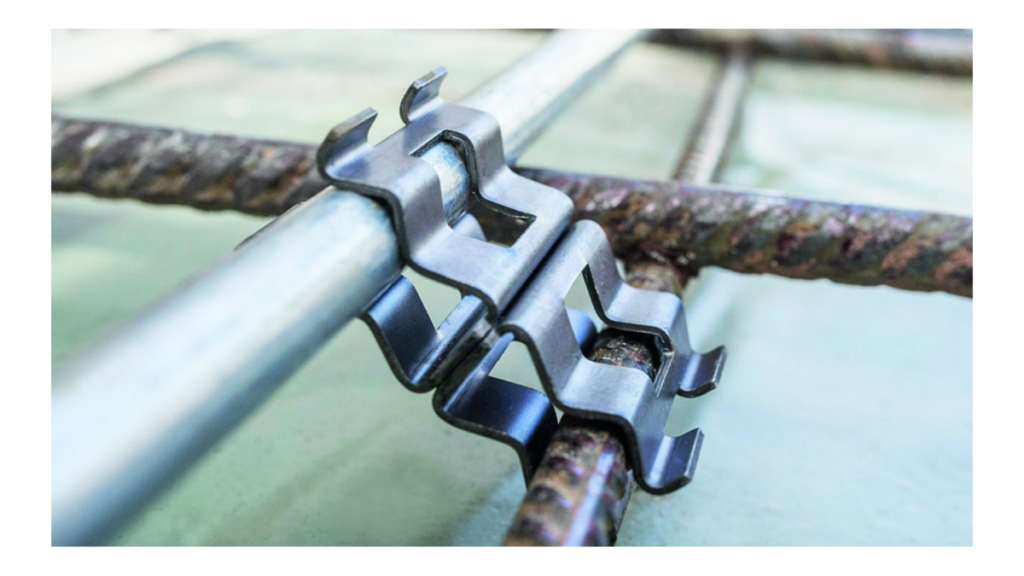Understanding the Role of Reobar in Construction
Reinforcing bar, commonly known as reobar, is a vital component in construction that plays a critical role in ensuring the structural integrity of various projects. It is primarily used to reinforce concrete, which is inherently strong in compression but weak in tension. This means that while concrete can bear heavy loads, it cannot withstand stretching or pulling forces effectively. Reobar addresses this limitation by providing tensile strength to the construction.
Definition and Purpose of Reobar
Reobar is a steel bar or mesh of steel wires that is embedded in concrete to enhance its tensile strength. The purpose of reobar is two-fold: it supports the concrete structures, and it ameliorates their ability to withstand various stresses encountered during their lifespan. By integrating reobar, engineers can create safer, more durable buildings, bridges, and infrastructure.
Typically, reobars are produced in various grades and diameters, allowing for flexibility and customization based on the specific requirements of each project. The surface of reobar often features ridges to improve bond strength with the concrete. Understanding the different types of rebar and their specific applications is essential for any construction professional aiming to uphold structural integrity. Additionally, rebar can be coated with materials like epoxy to prevent corrosion, especially in environments exposed to moisture or chemicals, further extending the lifespan of the concrete structure.
The Science Behind Reobar and Structural Integrity
The science behind rebar’s effectiveness lies in its mechanical properties and the physical interaction between concrete and steel. When concrete hardens around the rebar, it forms a composite material that combines the best qualities of both materials. The steel’s high tensile strength compensates for the concrete’s weakness in tension, creating a material that can withstand both compressive and tensile forces.
This synergy is crucial for various engineering calculations, particularly in assessing load-bearing configurations for buildings and other structures. Engineers must consider factors such as load distributions, environmental conditions, and potential stresses throughout the structure’s lifecycle. Thus, the proper use of rebar can significantly impact the safety and longevity of construction projects. Furthermore, advancements in technology have led to the development of high-strength rebar, which offers even greater performance characteristics, allowing for thinner concrete sections without compromising structural integrity. This not only reduces material costs but also minimizes the overall weight of the structure, making it more efficient and sustainable.

The Impact of Reobar on Different Types of Construction Projects
The influence of rebar extends across all realms of construction, from residential buildings to sprawling commercial complexes and critical infrastructure projects. Each type of construction utilizes rebar differently, tailored to meet unique challenges and requirements.
Rebar in Residential Construction
In residential construction, rebar is often used in foundations, driveways, and support beams. By integrating rebar, homeowners can ensure their structures withstand environmental stresses such as soil movement or flooding. Additionally, the use of rebar minimizes the risk of cracking, which can lead to costly repairs in the future.
Moreover, the incorporation of rebar into concrete slabs for flooring systems enhances stability, creating a safer living environment. Regulations often mandate the use of rebar in certain residential projects, reinforcing the perception of safety and durability among homeowners. The aesthetic appeal of homes can also benefit from rebar, as it allows for innovative architectural designs that might otherwise be impossible. For instance, open floor plans and expansive windows can be supported effectively with rebar-reinforced structures, providing both functionality and visual appeal. Find more about durability on https://www.edhec.edu/en/research-and-faculty/edhec-vox/product-reparability-durability-vs-reliability-communication-issues
Rebar in Commercial Construction
Commercial buildings, with their larger spans and increased loading requirements, often require more extensive rebar applications. Structures such as high-rise buildings, parking garages, and shopping malls rely heavily on rebar to maintain structural integrity under heavier loads.
For instance, the design of a multi-storied commercial building integrates rebar strategically throughout its concrete framework. This ensures that the weight of the building is adequately supported while combating potential lateral forces such as wind or seismic activity. Engineers often conduct complex calculations to determine the optimal placement and quantity of rebar necessary for safety and performance. Furthermore, the use of advanced technologies, such as Building Information Modeling (BIM), allows architects and engineers to visualize and optimize the rebar layout, ensuring that every inch of material is utilized efficiently. This not only enhances safety but also contributes to cost savings and sustainability in commercial construction projects.
Rebar in Infrastructure Projects
Infrastructure projects, including bridges, tunnels, and roads, represent the most demanding environments for rebar usage. These structures not only support heavy traffic loads but also must endure dynamic forces such as vibrations, thermal expansion, and unpredictable weather conditions.
Rebar plays a significant role in the longevity and performance of infrastructure. For example, bridges utilize rebar to enhance load distribution and minimize stress points. The integration of corrosion-resistant rebar options also enhances the durability of roadways and bridges exposed to de-icing salts and harsh environmental conditions, thereby extending their lifespan significantly. In addition to traditional applications, innovative techniques such as post-tensioning are being employed, where rebar is tensioned after the concrete has cured, allowing for thinner slabs and longer spans. This not only reduces material costs but also opens up new possibilities for design and functionality in infrastructure projects, enabling the construction of more resilient and efficient public works that can withstand the test of time.
The Process of Incorporating Rebar into Construction Projects
Integrating rebar into construction projects involves a systematic process that ensures effectiveness and compliance with engineering standards. This process can be broken down into three main stages: design, installation, and inspection.
Designing with Rebar in Mind
The initial stage of incorporating rebar revolves around the design phase. During this stage, structural engineers create detailed plans that dictate the placement, spacing, and quantities of rebar needed for the project. This planning phase is critical, as improper calculations can lead to significant structural weaknesses.
Modern software aids this design process, allowing engineers to model structural performance accurately under various conditions. Through rigorous analysis and simulation, rebar is strategically placed to optimize load distribution, ensuring that the design meets safety standards and performance expectations. Additionally, engineers must consider factors such as environmental conditions, potential seismic activity, and the specific loads that the structure will bear over its lifespan. This comprehensive approach not only enhances the safety of the construction but also contributes to the longevity and durability of the structure. To learn more about simulation click here.
The Installation of Rebar
Once the design is finalized, the next step is the physical installation of rebar. Skilled laborers cut, bend, and place the rebar according to the pre-determined layouts. Ensuring proper alignment and spacing during installation is crucial, as these factors directly affect the structural integrity of the concrete elements once they are poured.
Typically, the installation process includes securing the rebar using wire ties or plastic spacers to maintain its position within the concrete framework. Following the completion of installation, the site is prepared for the concrete pour, which is an essential step in creating a stable structure. Moreover, workers must be vigilant about the cleanliness of the rebar, as contaminants like oil, dirt, or rust can compromise the bond between the rebar and the concrete, potentially leading to future structural issues. This attention to detail during installation is paramount, as it lays the groundwork for the entire construction project.
Quality Control and Inspection of Rebar
The final phase of incorporating rebar involves thorough quality control and inspection. Before pouring concrete, inspectors examine rebar placements for compliance with the approved designs and specifications. Any discrepancies or issues must be rectified immediately to avoid structural failures.
Furthermore, regular inspections during the construction process help to guarantee that the integrity of the rebar remains intact until the concrete has cured. This proactive approach to quality control mitigates risks associated with construction and enhances the overall safety of the project. Additionally, post-pour inspections are conducted to assess the curing process and ensure that the rebar is effectively bonded within the concrete. This multi-layered inspection process not only safeguards the structural integrity but also instills confidence in the overall quality of the construction, reassuring stakeholders and future occupants alike that the building is sound and reliable.

Future Trends in Reobar Use and Technology
As the construction industry evolves, new trends in rebar use and technology are emerging that could further enhance its effectiveness and sustainability. Innovations are driven by demands for improved structural performance and environmentally friendly construction practices.
Innovations in Rebar Materials
Recent advancements in rebar materials include the development of high-strength steel and fiber-reinforced rebar alternatives, offering significant improvements over traditional options. These innovative materials can provide enhanced performance while reducing overall material consumption.
Additionally, the introduction of corrosion-resistant coatings allows rebar to withstand harsher environments, thereby prolonging the lifespan of structures. Such innovations not only lower maintenance costs but also contribute to overall sustainability in construction. Furthermore, the exploration of bio-based materials for rebar production is on the rise, with researchers investigating the potential of using natural fibers and polymers that could offer both strength and a reduced environmental impact. This could lead to a new generation of rebar that aligns with eco-friendly construction practices.
The Role of Rebar in Sustainable Construction
In response to growing environmental concerns, the role of rebar in sustainable construction is becoming increasingly significant. As companies aim to reduce their carbon footprints, the utilization of recycled materials in rebar production is gaining traction. This shift helps minimize raw material consumption while still offering the necessary strength and durability.
Moreover, incorporating rebar into designs that emphasize energy efficiency, such as passive solar designs, adds to the sustainable narrative, allowing buildings to perform better while using less energy. The integration of rebar into green building certifications, like LEED, is also becoming more common, providing an incentive for developers to adopt more sustainable practices. As these certifications gain popularity, the demand for rebar that meets stringent environmental standards will likely increase, pushing manufacturers to innovate further.
Predictions for Rebar Use in Future Construction Projects
Looking ahead, it is anticipated that the use of rebar will continue to evolve in line with technological advancements. The integration of smart technologies and IoT devices could open new possibilities for monitoring the health of structures that use rebar. This real-time data can inform maintenance and overhaul strategies, ultimately extending the lifespan of vital infrastructure.
As construction practices continue to advance, rebar will remain a cornerstone of structural engineering, adapting to meet modern demands for resilience, sustainability, and efficiency. The ongoing research and development in this field promise exciting opportunities for the future, ensuring that structures become increasingly safer and more durable over time. Additionally, the potential for 3D printing technology to create custom rebar shapes and configurations could revolutionize how rebar is utilized, allowing for more complex designs and reducing waste during construction. As these trends unfold, the construction industry is poised to embrace a new era where rebar not only supports structures but also contributes to a more sustainable and efficient built environment.
Other resources: Essential Tips for Choosing Reo Bar for Concrete Reinforcement


